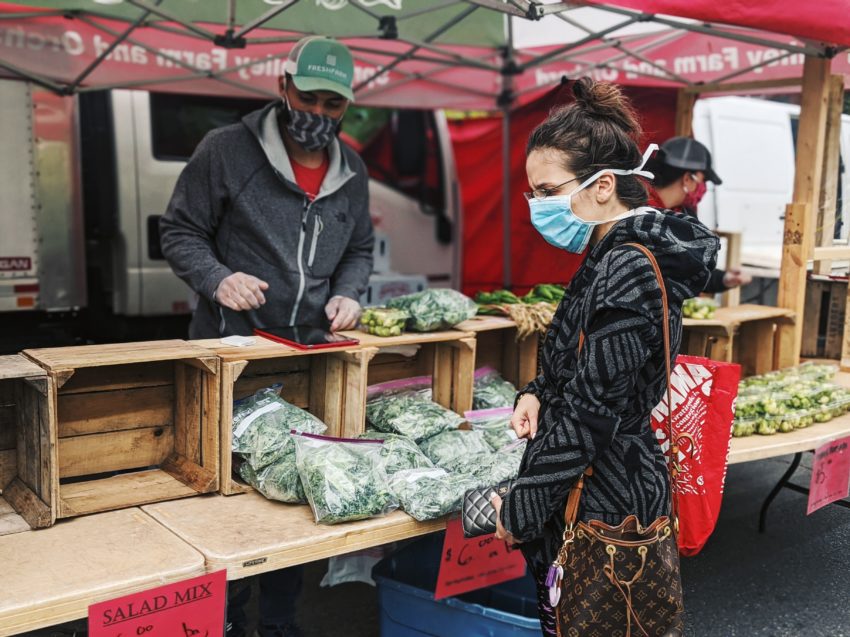
Share On Social!
Does your town have a farmers market?
Farmers markets are a path to healthy food access. They are especially important now as the pandemic worsens food insecurity.
Fortunately, the Farmers Market Coalition is stepping up to support farmers markets. They’re pushing for federal aid for markets, creating resources and anti-racist toolkits, and sharing how markets increase access to healthy, fresh produce and social connections, and engage farmers in the local economy.
“Amidst a global pandemic and nationwide change, it is now more important than ever for [farmers] markets to bring people together,” according to the coalition. “As hubs for connection and community resilience, farmers markets have particularly risen to the occasion this year by providing a necessary sense of unity and stability during a time of great uncertainty.”
For National Farmers Market Week on Aug. 1-7, 2021, we at Salud America! are showcasing how farmers markets are essential for increasing access to fruits and vegetables among Latinos and all people!
How Do Farmers Markets Impact Healthy Food Access for Latinos?
Latinos frequently live in food swamps.
In these areas, Latinos have no easy access to supermarkets and farmers’ markets. But they have more access to fast food and corner stores. This leads to overconsuming unhealthy foods, according to a Salud America! research review.
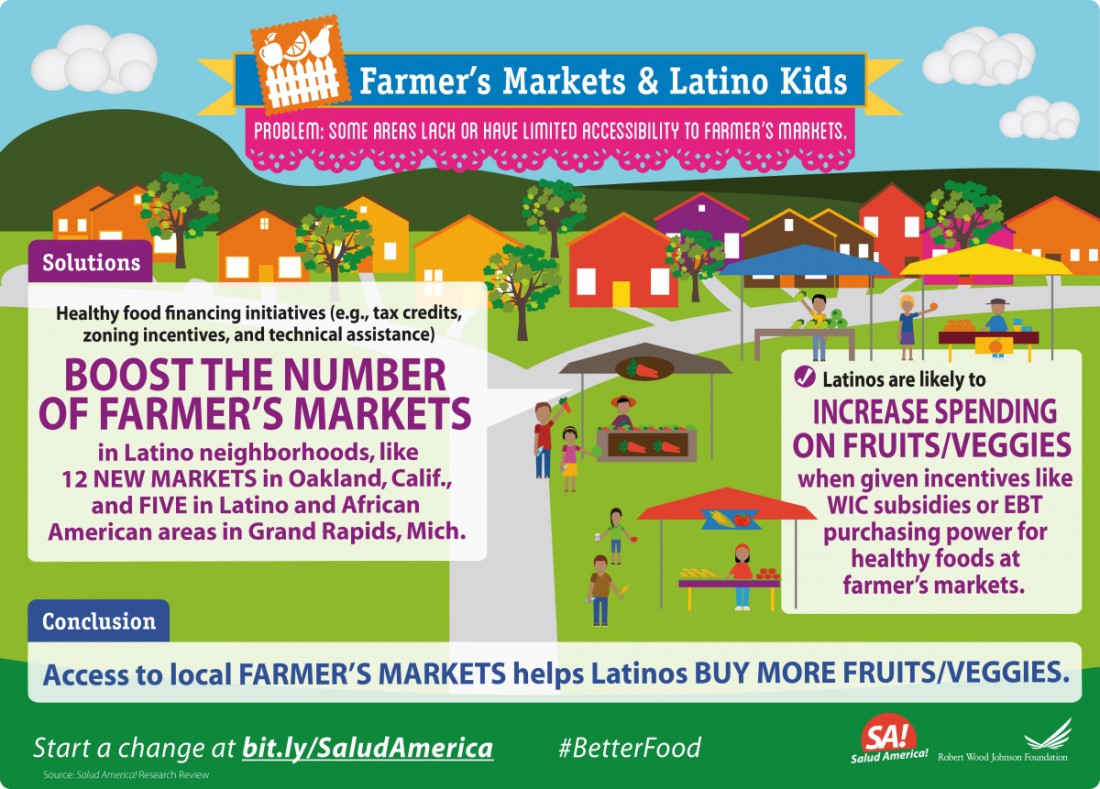 The number of U.S. farmers’ markets has more than doubled in the past 20 years. It rose from 2,863 in 2000 to 8,768 in 2019, according to a USDA database. However, there were only 1,597 markets listed as of July 15, 2021.
The number of U.S. farmers’ markets has more than doubled in the past 20 years. It rose from 2,863 in 2000 to 8,768 in 2019, according to a USDA database. However, there were only 1,597 markets listed as of July 15, 2021.
Many of these markets are not accessible to Latinos.
In fact, a San Diego State University report indicates that 44% of the city’s farmers markets are in census tracts with high levels of gentrification.
This is a big missed opportunity to improve Latino health.
Latinos are willing to support farmers’ markets introduced into their neighborhoods. For example, the presence of a farmer’s market was linked to greater consumption of fruits and vegetables among immigrant women in New York City.
“I believe people are using the [farmers] markets as a way to get their fresh food and expand (their usage of) the local environment [amid coronavirus],” John Carey, manager of a Houston-area farmer’s market, told the Houstonia.
How Are Farmers Markets Responding amid the COVID-19 Pandemic?
Some markets closed as the COVID-19 pandemic struck.
Others have reopened and thrived, as more people get the vaccine.
New Mexico’s Carlsbad Downtown Farmers Market reopened in July 2021 after facing limitations in 2020.
Minnesota has growing interest in farmers markets. Ohio markets remained open to ensure healthy food access in a food desert. Connecticut opened new markets with affordable fresh produce, local chef demonstrations, and murals.
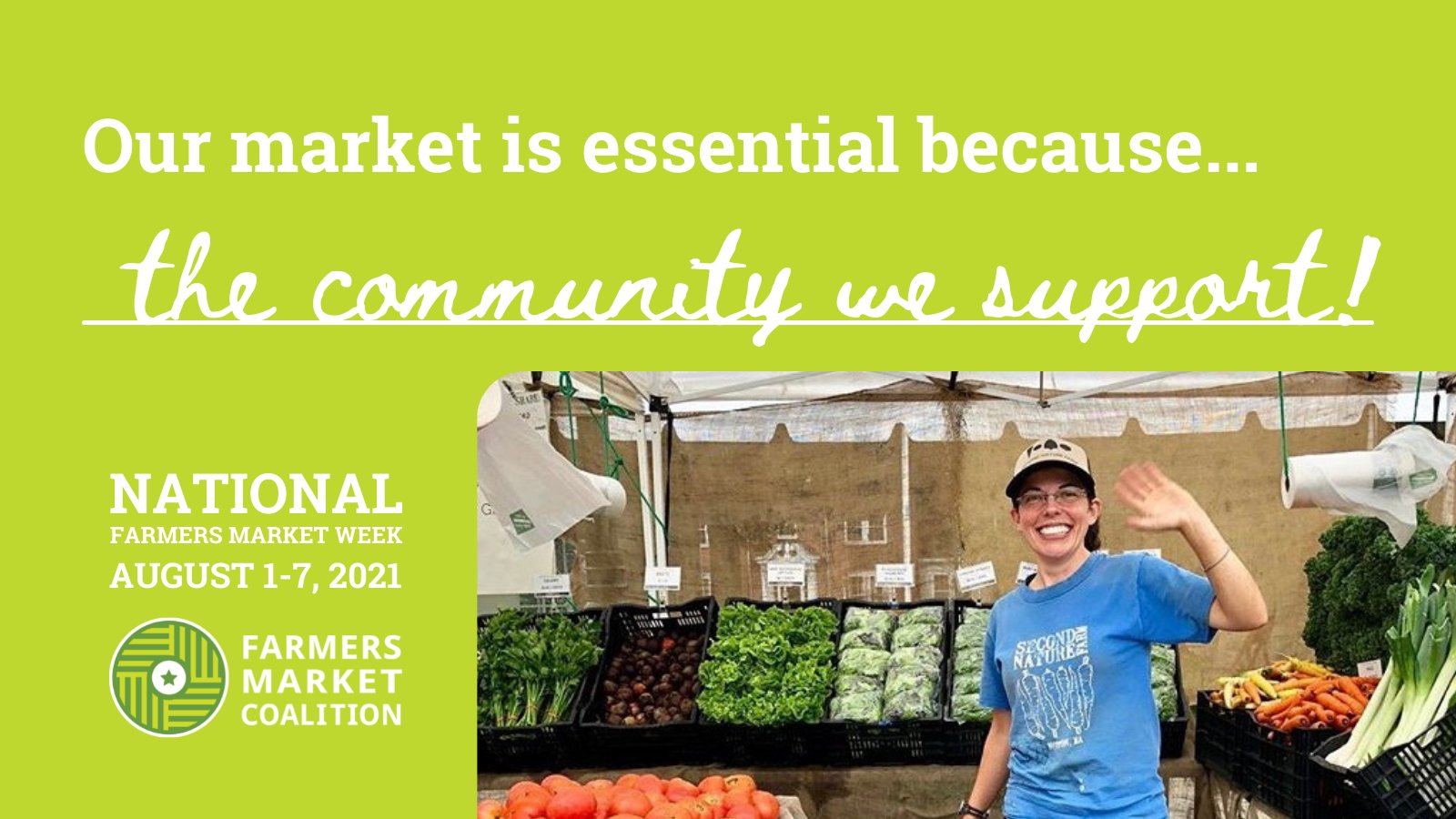 “Farmers markets are the bridge between community and food,” Angelica Ojeda, one of the market managers, told ctpost.
“Farmers markets are the bridge between community and food,” Angelica Ojeda, one of the market managers, told ctpost.
At the Lafayette Farmer’s Market in Indiana, organizers are seeing a major increase in visitors. They say it’s because people have buying power through the federal food assistance Supplement Nutrition Assistance Program (SNAP).
The Farmers Market Coalition helps more markets accept SNAP purchases.
They also advocate for federal aid for markets as vital components of the local food system. They orchestrate trainings to help market operators with physical redesigns, sales, and incentives.
Civil Eats urged public and private entities to support farmers markets.
“We hope the private individuals and foundations who can will step up and donate to support the operation of their local farmers markets,” they wrote. “These community institutions have a pivotal role to play—now and in the future—and they’re much too important to lose.”
How Are Farmers Markets Responding to Social Justice Issues?
The Farmers Market Coalition also is creating an anti-racist toolkit to help farmers markets take action to address structures and policies that perpetuate inequities and discrimination.
“The impact of COVID-19 created rapid change, adaptation, and innovation in our sector and demonstrated our capacity for flexibility and resilience,” according to the coalition’s blog post on July 10, 2020.
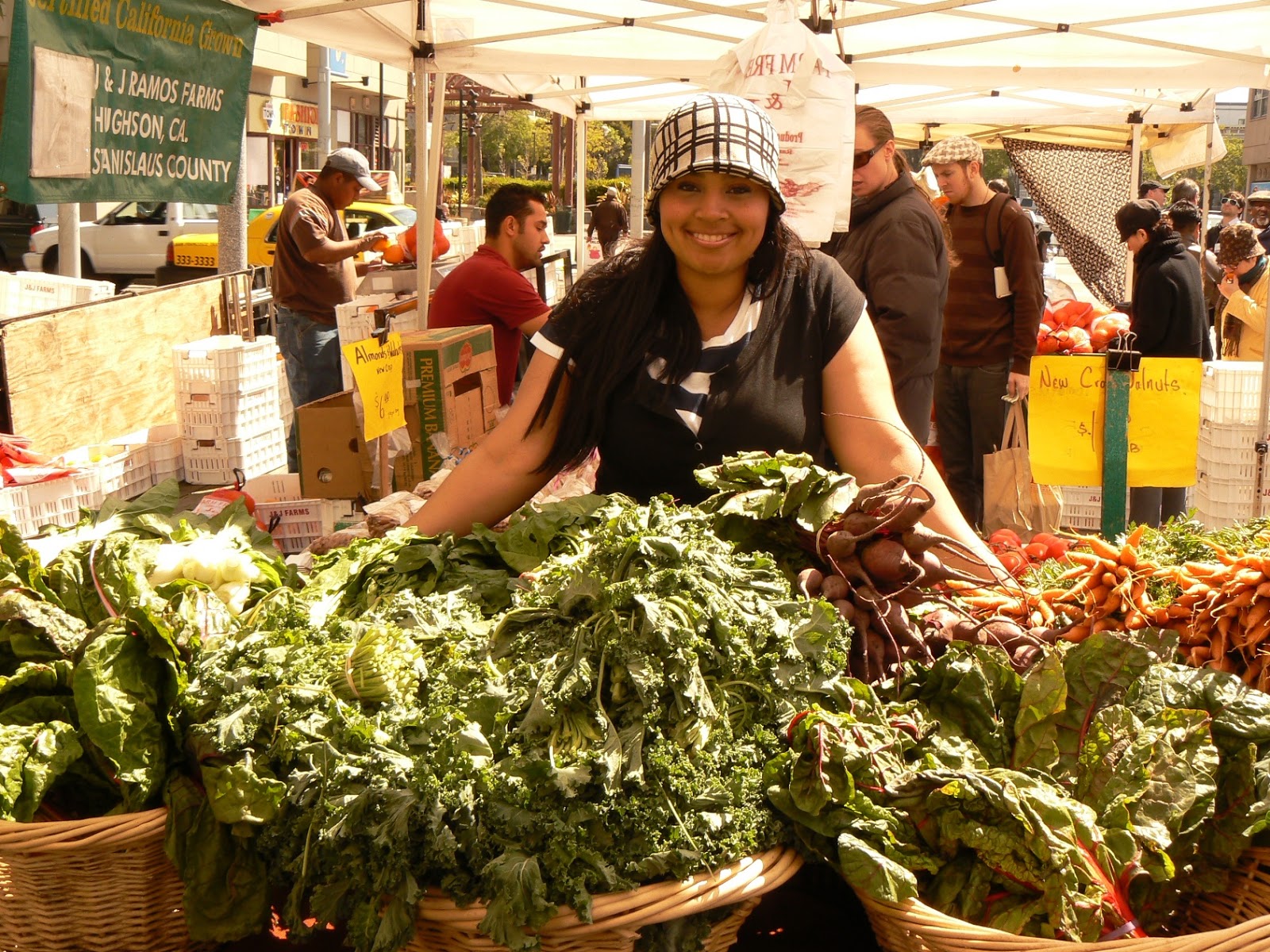 “These lessons will stay with us long into the future and will help to evolve our vision of what farmers markets can and should be.”
“These lessons will stay with us long into the future and will help to evolve our vision of what farmers markets can and should be.”
A recent example is the San Luis Obispo Farmers Market in California.
The market hosted a block party on “belonging,” sponsored by Race Matters SLO, to highlight local Black-owned businesses and art.
“Vaccines were being given out and some people were able to get their shots,” according to KSBY. “There was also live music from multiple local DJs and an arts and crafts table for people to get creative.”
How Can We Make Farmers Markets Better?
Farmers markets that enable greater purchasing power for fruits and vegetables also can increase spending on fresh produce.
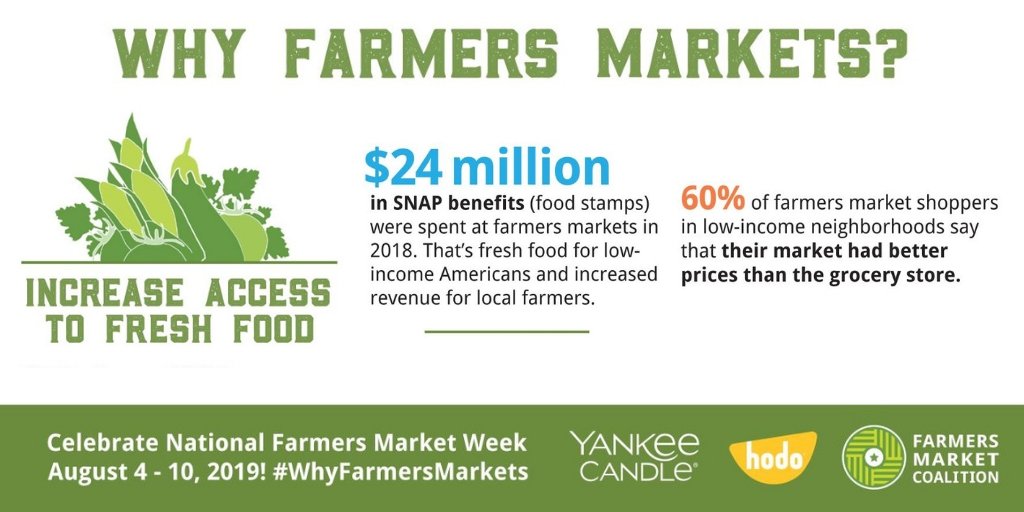 In 2018, farmers markets redeemed $24 million in SNAP benefits. That means more revenue for local farmers and more fresh food access for families.
In 2018, farmers markets redeemed $24 million in SNAP benefits. That means more revenue for local farmers and more fresh food access for families.
Also, 60% of farmers market customers in low-income neighborhoods say their farmers market had better prices than their grocery store.
Kaely Summers is squeezing even more benefits from farmers markets.
Summers is the manager of Adelante Mujeres’ Forest Grove Farmers Market in Oregon. But Summers saw that kids get a little bored when they came to the market with their parents.
So Summers and other market leaders teamed up to create the bilingual Market Sprouts Kid Club. The club uses fun activities to teach Latino kids and all kids about farming, fresh produce and healthy eating at the market.
“For [kids] to get engaged in eating healthier, we wanted to make sure that everything we were doing is fun,” Summers said.
How Can You Get involved?
Check this awesome map to see if there’s a farmers market near you.
If yes? Visit it. See what fruits and vegetables you can find.
If no? Think about starting one in your own neighborhood.
You can be like San Antonio teacher Michelle Griego.
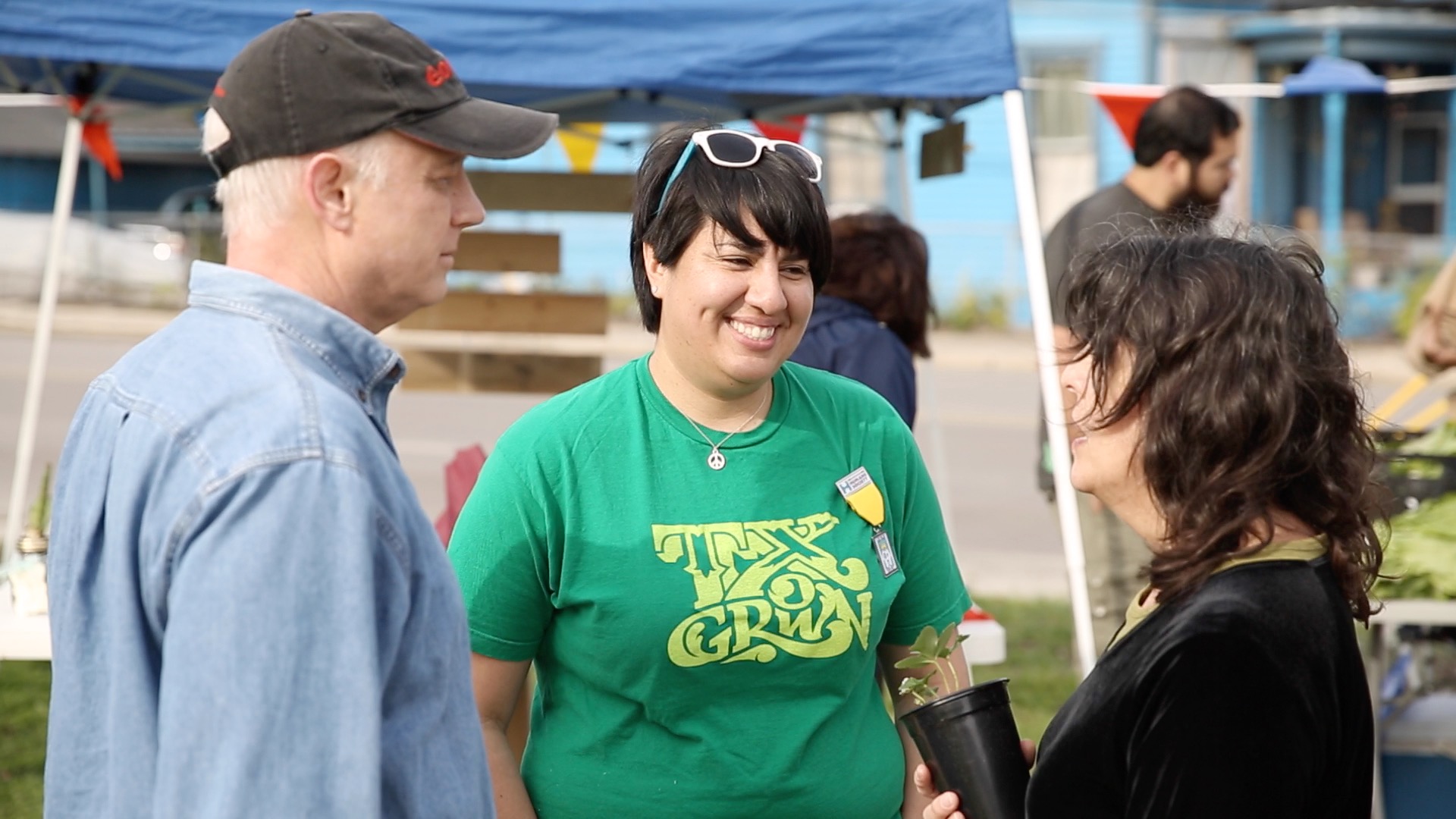
Griego had no farmers market in her historic neighborhood, Dignowity Hill. So she did some research, built community support, and filled out paperwork to start her own market.
“A big part of the farmers’ market is educating people who come out to our market,” she said, which is why securing demonstrations is important,” Griego said. “It’s been a journey, but it’s not over!”
We also urge you to get involved for the health of your community!
No matter what topic you are interested in, be sure to download the Salud America! The Health Equity Report Card. The Report Card auto-generates local data with interactive maps and gauges. These can help you visualize inequities in local healthy food access compared to your state and nation.
You can email your Health Equity Report Card, share it on social media, and use it to make the case for community change to boost health equity. This is where everyone has a fair, just opportunity to live their healthiest.
Get your health equity Report Card!
Editor Note: The main art image is from the Farmers Market Coalition via Twitter.
Explore More:
Healthy FoodBy The Numbers
1
Supermarket
for every Latino neighborhood, compared to 3 for every non-Latino neighborhood



